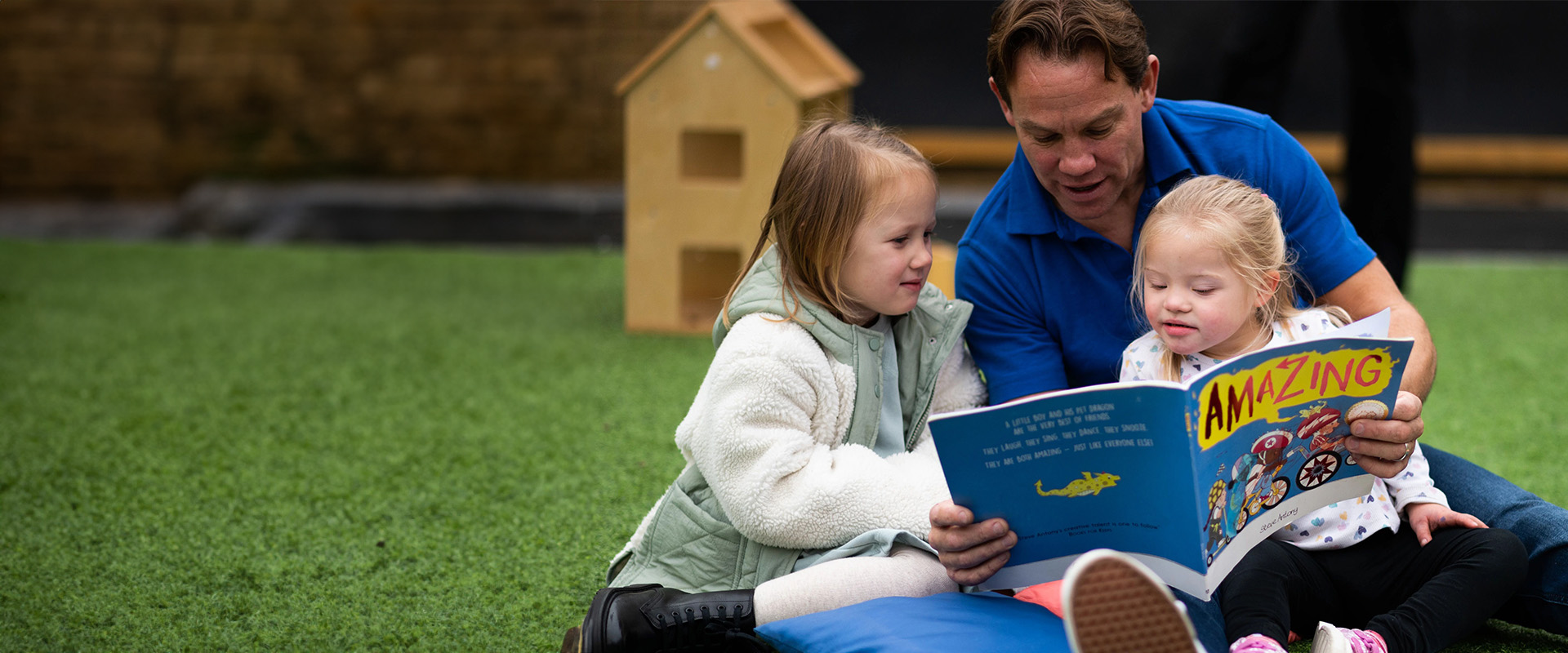Parent’s Guide to Reading with Children 3-5 Years

Sharing a book with a child is fun – it’s a time for closeness, laughter and talking together. Reading with your child can help them develop their language, enhance your special relationship and prepare them ready for school.
Experience tells us that time spent sharing a story can be the most precious and magical time for children and adults alike. Jumping into the pages of a book and being transported to another world does wonders for a child’s imagination and introduces them to a variety of experiences - making their world a whole lot bigger.
By starting the journey of building a lifelong love of reading for pleasure, parents are giving their child the opportunity to be the best they can be. We know that children who read for pleasure do better in a wide range of subjects at school and it also positively impacts their wellbeing.
Establishing a healthy reading habit is a wonderful gift that parents can give to their child. To do this, reading needs to be done repeatedly and consistently. It’s important for parents to carve out time that is dedicated to reading with their child in an environment where interruptions are kept to a minimum.
The earlier parents can start, the better! This allows the maximum time for their child to grow and develop with reading, and for the love of reading to take root, grow and become part of their life. And what an enriched life that will be.
Why Reading Together Is Important
Reading together is special time for you and your child to spend together - without distractions – so that you can share stories, laugh and talk together.
The routine of sharing stories and rhymes helps your child to communicate and develop vocabulary and will promote their sense of wellbeing.
Books introduce children to the exciting world of stories and can help them learn how to express their own thoughts and emotions.
Stories provide parents and carers with a structure to help them talk aloud to children and listen to their responses. They help you be silly; overcome adult inhibitions and they are great topics for conversation.
Research suggests that children who are regularly read to from an early age make better progress when they get to school – learning rhymes and stories together will give them a flying start.
Giving your child time and full attention when reading them a story tells them they matter. It builds self-esteem, vocabulary, feeds imagination and even improves their sleeping patterns.
Bright Beginnings Curriculum links- Aspect 2.2- Reading
- I am developing my ability to become a ‘good listener’ in small groups by listening and taking turns to speak with my peers.
- I can self- select a range of non-fiction books and can find out facts for myself about things that interest me. Sometimes I may need some help to do this.
- I recognise and value that a diverse range of text exists in different languages. I can see newspapers, menus and magazines in a range of languages as well as English.
- I am developing my imagination and putting my ideas into practice ideas through a range of opportunities such as making my own books.
- I develop a range of new vocabulary when you introduce new words to me. This helps me to make sense of the world which is vital for me to learn to read.
- I can play with sounds and rhymes and make up nonsense words. I can tap or clap out a sound pattern.
- I can recall familiar refrains and predict what comes next, when you read stories to me such as ‘The Gingerbread Man’ For example ‘’Run, run, as fast as you can. You can’t catch me I’m the Gingerbread man’’.
Top Tips for Reading with Your Child
- It sounds obvious but, find somewhere quiet away from noise, TV and mobile phones. This way your child gets your full attention, so they feel important.
- Cuddle up together or encourage brothers and sisters to join in and enjoy stories and rhymes together. What about time alone, special time for each child?
- Look at the pictures in the book, discuss what you or they can see. Ask their opinion on what’s in the illustrations and who they can see. For example, ‘’What do you think the three bears thought when they found Goldilocks in their house?’’
- Make animal noises or voice sound effects for the different characters – these help to bring the story to life and will make you both laugh!
- Ask questions when you’re reading together such as: ‘’What can you see on this page?’’ ‘‘How do you think the wizard might feel about that?’’
- Try asking your child to tell the story in their own words. They can ‘read’ the pictures to you and talk about what’s happening on the page. This will support their memory recall and sequencing skills, recalling the different parts of the story.
- As they become more confident in retelling the story, deliberately miss a page out when reading and see if they notice or ask them to think about what the character might be feeling at certain points. This will help with understanding and applying prior knowledge.
- Encourage your child to pick out any familiar letters or words in books that they may recognise for example the letters in their name or words that they may see in their environment e.g., familiar street names. This will support early reading skills.
- Consider purchasing different types of books like non-fiction so that your child can find out interesting facts about things they are interested in like dinosaurs or animals. Research the facts together so you have shared interests.
- If you feel comfortable, try making funny faces or using character voices or accents for different characters – these always make children (and you) giggle!





